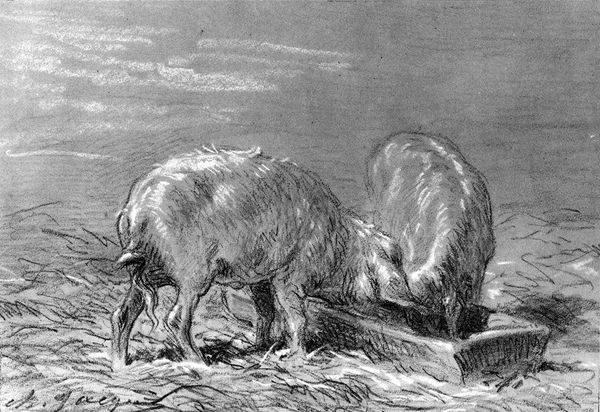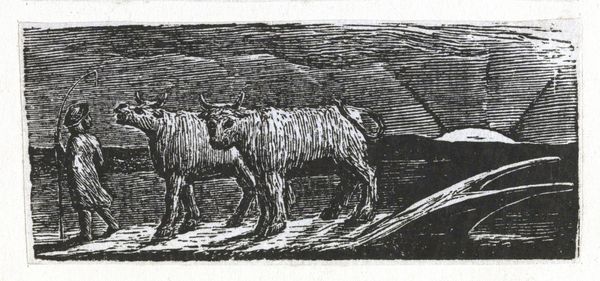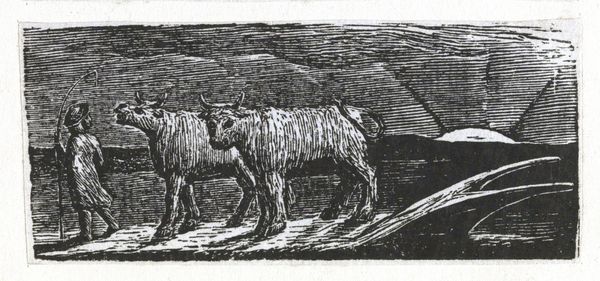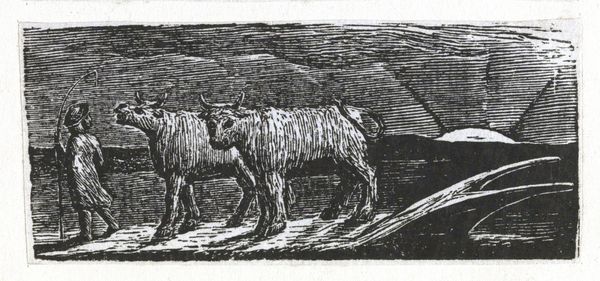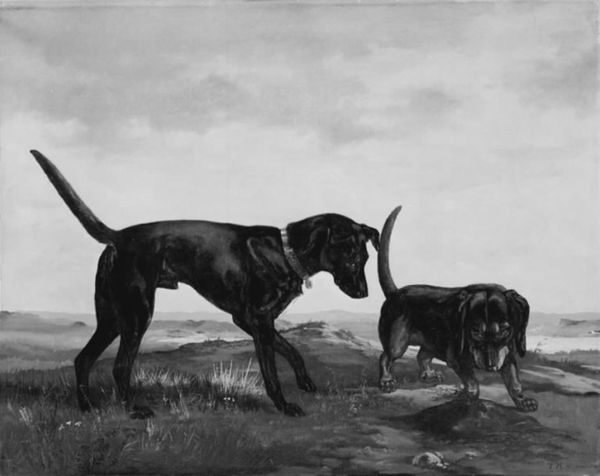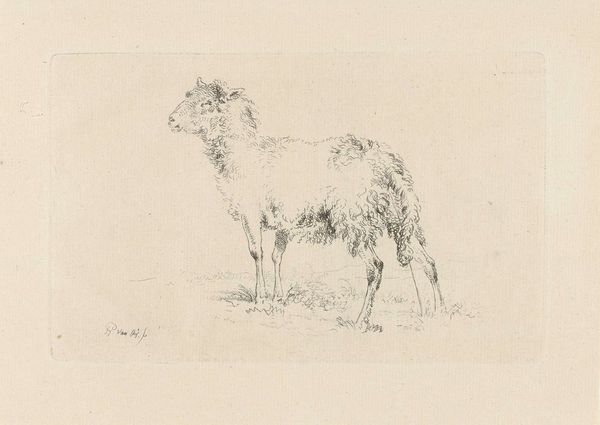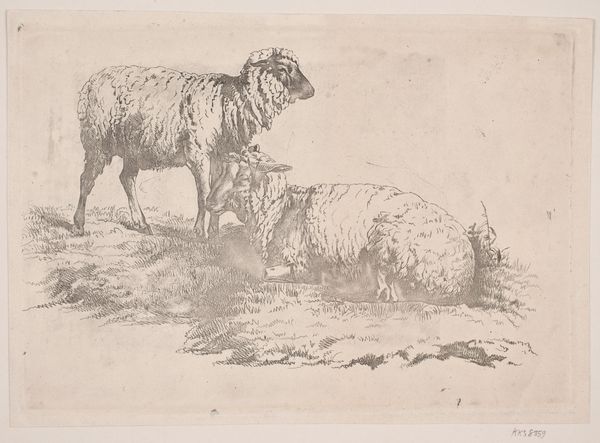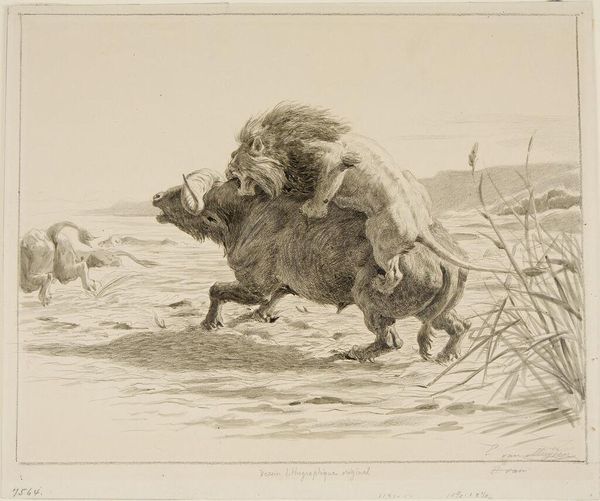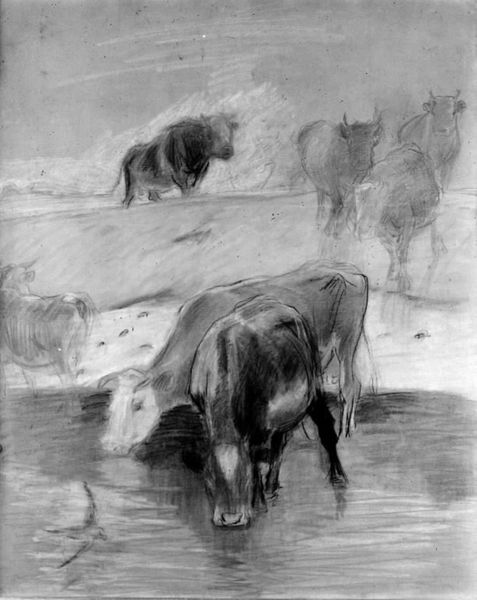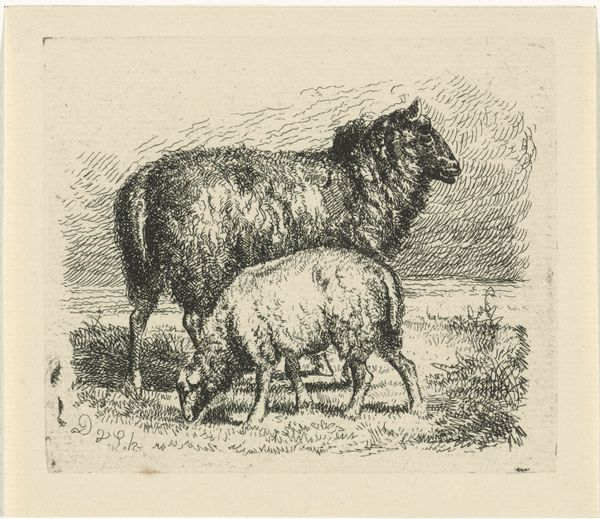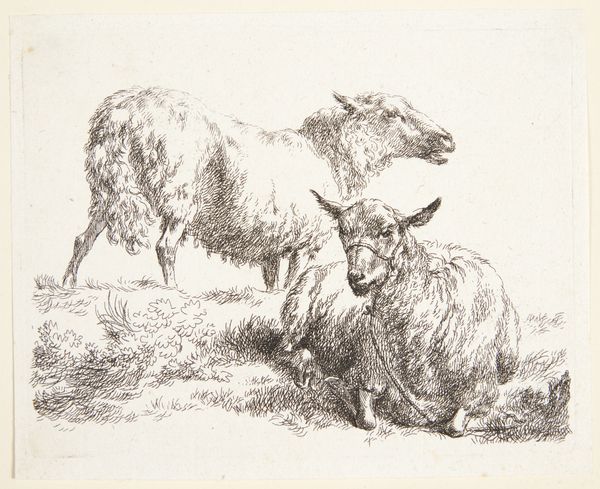
drawing, graphite, charcoal
#
drawing
#
landscape
#
charcoal drawing
#
surrealism
#
graphite
#
charcoal
#
graphite
#
realism
Copyright: Public domain
Charles Jacque rendered this drawing of an ewe and lamb in the 19th century, a pastoral scene laden with symbolic weight. The lamb, an ancient symbol of innocence and sacrifice, echoes through time—from the sacrificial lambs of antiquity to its central place in Christian iconography as the Agnus Dei. The tender bond between mother and offspring speaks to universal themes of protection and nurturing. Consider the 'Criophorus', the ram-bearer motif, dating back to ancient Greece. Initially a symbol of pastoral care and prosperity, it evolved into a symbol deeply associated with sacrificial offerings. Similarly, the lamb has undergone a transformation in meaning, often imbued with a sense of gentleness and vulnerability that engages our collective memory and subconscious fears related to loss. Such visual representations are a powerful force engaging viewers on a deep, subconscious level. The lamb, therefore, is not merely an animal in a field, but a complex symbol whose non-linear, cyclical progression has resurfaced, evolved, and taken on new meanings across historical contexts.
Comments
No comments
Be the first to comment and join the conversation on the ultimate creative platform.
